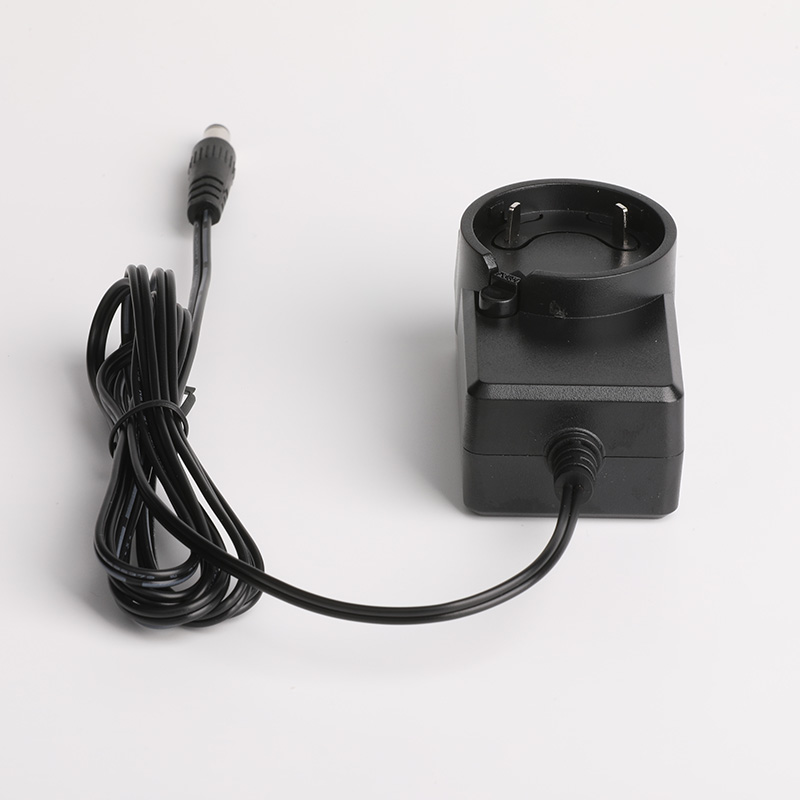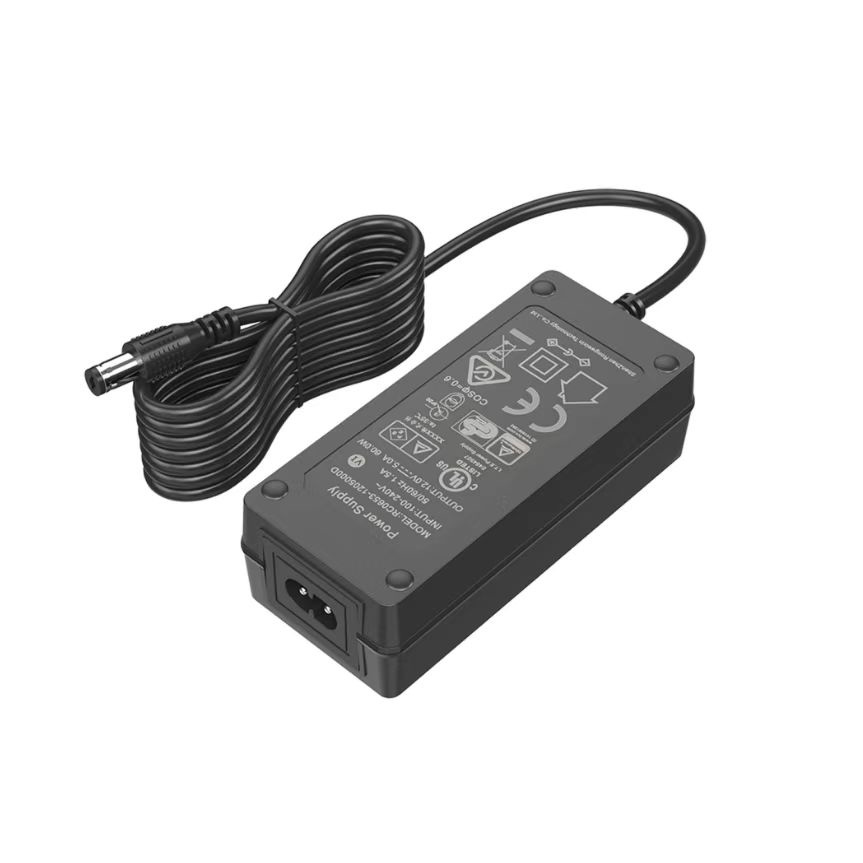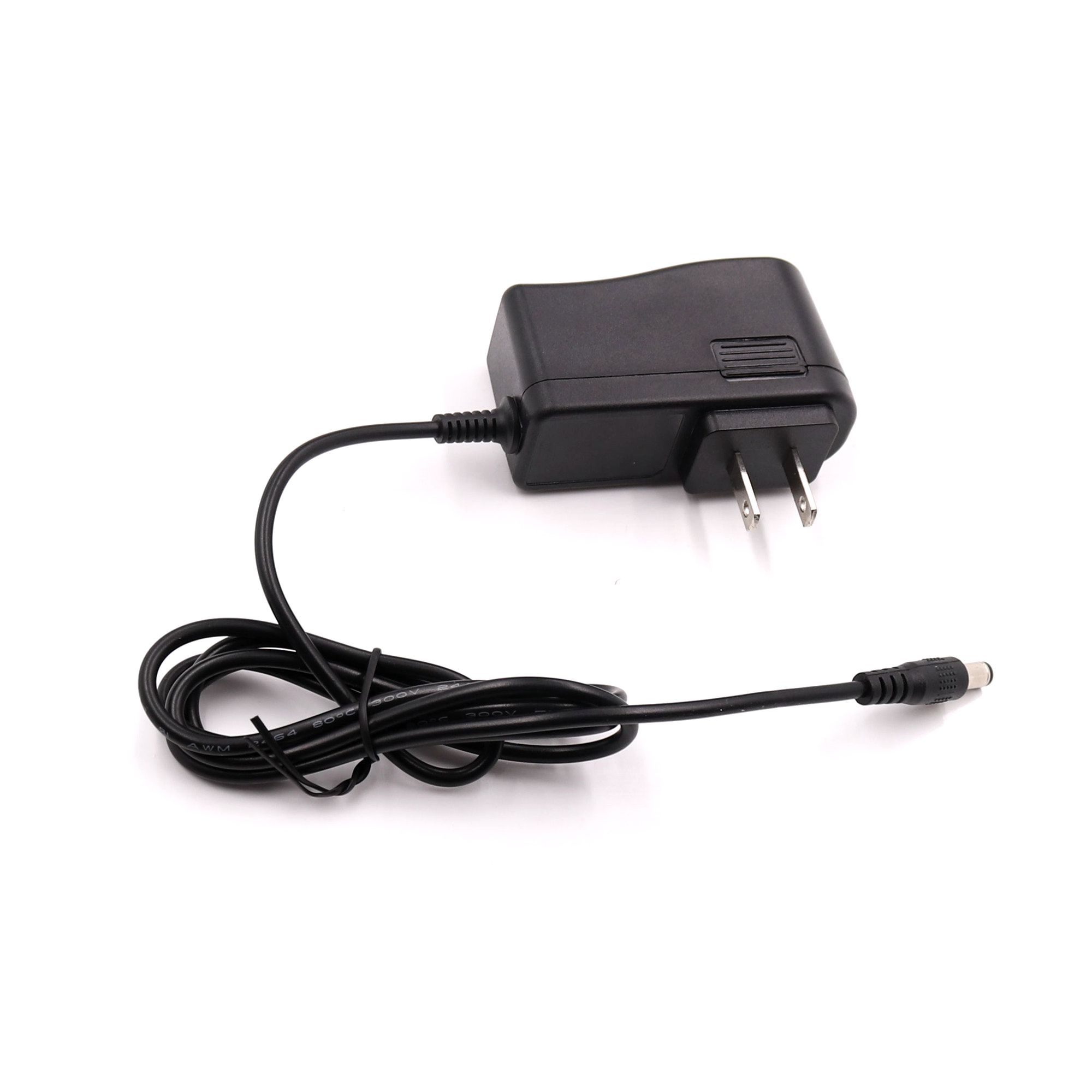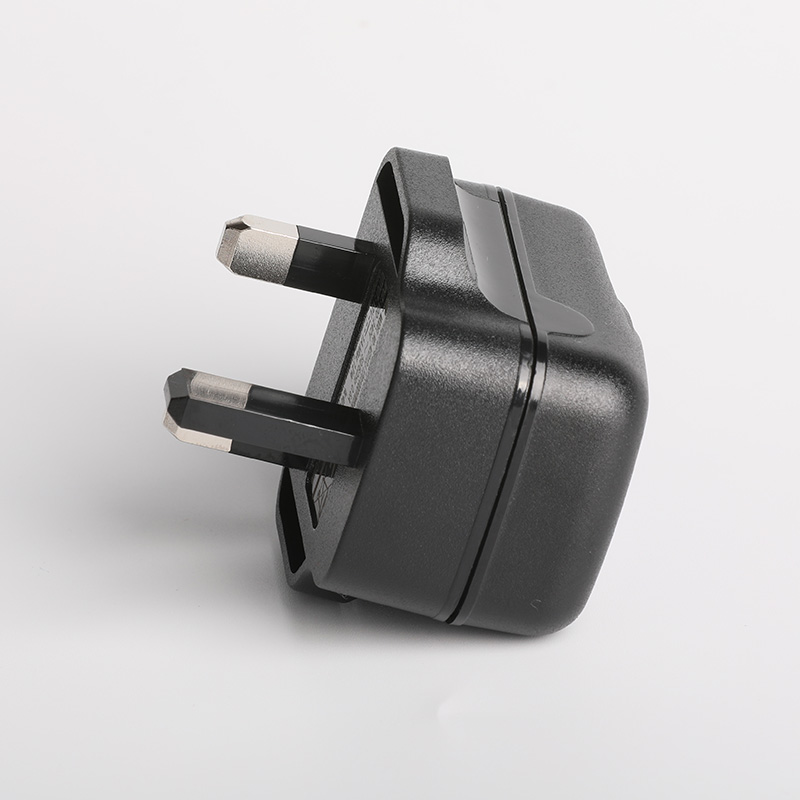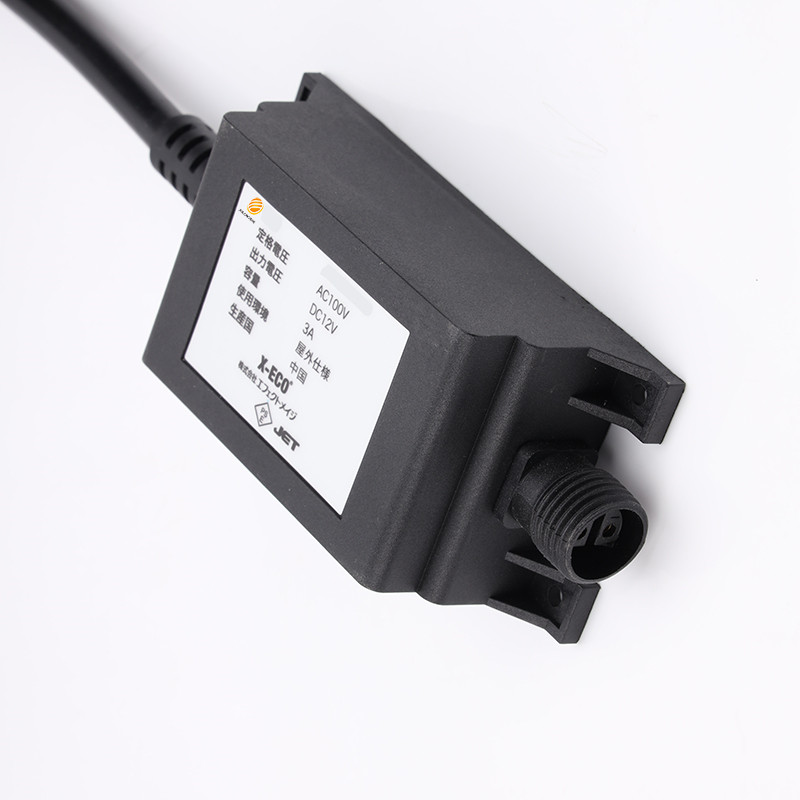IP20 Interchangeable 18W 24W AC Power Adapter
Technical Parameters
| Max Watts | Ref. Data | Plug | Dimension | |
| Voltage | Current | |||
| 18-24W | 12-60V DC | 1-2000mA | US | 70*40*35 |
| EU | 70*40*35 | |||
| UK | 70*40*35 | |||
| AU | 70*40*35 | |||
Summary of overcurrent protection experiment
In a series regulated power adapter, all load current flows through the regulator tube. In case of overload, instantaneous charging of large capacitors or short circuit of output, the regulating tube will flow a large current. In particular, when the output voltage is short-circuited carelessly, all the input voltage is added to the collection and shooting poles of the series regulating tube, so that the heat in the tube increases violently. If there is no proper protection, the pipe will be burned in an instant. The thermal inertia of a transistor is smaller than that of a fuse, so the latter cannot be used to protect the former. The series regulator must be protected by a fast-acting electronic protection circuit. The electronic protection circuit can be divided into current-limiting type and cut-off type. The former limits the current of the regulating tube below a certain safe value, while the latter immediately cuts off the current of the regulating tube in case of overload or short-circuit accident at the output end.
The regulated DC power adapter produces a strong negative high voltage, and then connects one part of it to the cathode and the other to the anode. A strong electric field is generated between the cathode and the anode, and the electric field at the two poles exceeds the specified intensity, and then it will discharge. There's ionization around the electric field, and then there's a lot of electrons and ions. After a while, a very strong electromagnetic wind can be heard around the electric field. In low light, faint purple - blue corona can be seen around. Moreover, around the electric field, there will be a lot of tar, dust and other particles combined with ions or electrons, which will move towards the poles under the action of the electric field force. The mass of the electron is very small, but it moves very fast, so it is mainly negatively charged particles.

